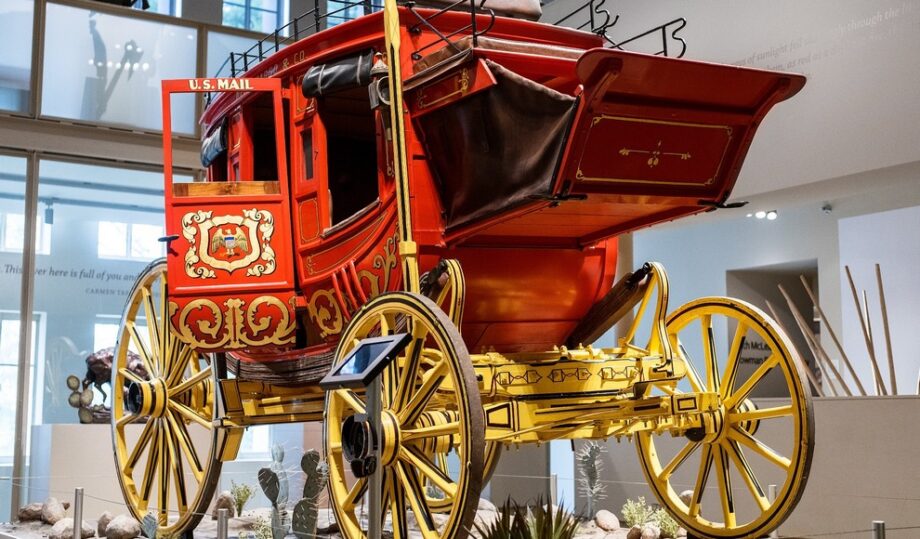Wells Fargo Bank has owned this piece of land on Montgomery Street since 1852, when it first opened a branch there. An interesting museum of the early history of the state of California is now open here.
Wells Fargo, one of the leading US banks, traces its history back to 1852, when two successful traveling salesmen Henry Wells and William Fargo decided to found a savings bank where the lucky gold miners of the Gold Rush era could keep their money. Wells Fargo’s history is actually the history of San Francisco and all of California, with its ups and downs.
Much of the Wells Fargo Museum’s exhibit is dedicated to the glorious years of the Gold Rush. Among the most interesting exhibits are samples of nuggets from different deposits, tools for gold mining, clothes, shoes and household items of gold miners. A large part is reserved for old photographs, archival documents and audio evidence. The history of Wells Fargo Bank is represented by models of bank safes of the 19th and 20th centuries, working equipment and samples of bank papers.
This is the very place where Henry Wells and William Fargo (H. Wells and W. Fargo) first started their banking business, during the hot times of the “gold rush” in 1852. The history of this particular business is preserved here, but since the Wells Fargo bank was closely involved in the development of San Francisco and California, the museum is a real treasure for history buffs.
As you might expect from such a solid corporation as Wells Fargo (now one of the largest banks in America), the exposition is well thought out and professionally presented. In the museum you will see samples of native gold from all major deposits in the foothills of the Sierra Nevada, banking equipment from the mid-19th century and a real Wells Fargo postal stagecoach (their trademark). You will learn the story of Black Bart, who managed 27 robberies of these same stagecoaches (he had to stop at this, since the twenty-eighth was not so successful). One of the most interesting exhibits – for those who often travel – will be a model of a “moving” coach, in which you can sit down and, while listening to an actor’s reading of the diary of a real passenger in 1859, imagine a journey from St. Louis to San Francisco. Sitting in the cramped carriage with a few others and hardly imagining a “complete set” of nine people, you begin to understand how petty and unjustified complaints of modern travelers are …
